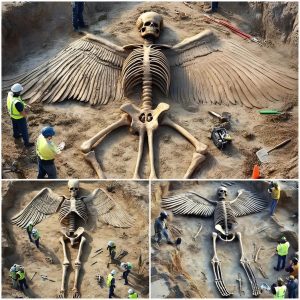In a groundbreaking discovery that has shocked the scientific community, archaeologists have unveiled an immensely significant find: the skeleton of a giant primitive man, dating back millions of years, revealing new insights into bipedalism and unique posture of early humans.
Historical Discovery
The excavation took place in a remote area of East Africa, once the habitat of early humans. This skeleton, with an impressive height of up to 2.5 meters, has left scientists astounded. It is considered one of the most important discoveries in archaeology in the past decade.
Bipedalism Capability
The most remarkable feature of this skeleton is the structure of the legs and pelvis. According to scientists, this structure indicates that this giant primitive man had the ability to walk on two legs. This is a particularly significant discovery as it provides strong evidence of the evolutionary transition of humans from quadrupedalism to bipedalism.

Unique Posture
In addition to the ability to walk on two legs, the skeleton also reveals a completely different posture compared to what we previously knew about early humans. Scientists have found that the spine of this skeleton has a special curvature, allowing for a more upright posture and enabling more flexible use of the hands in daily activities.
Significance of the Discovery
This discovery not only helps us understand more about the evolutionary process of humans but also opens up many new research directions. Finding a giant primitive man’s skeleton with bipedalism capability and unique posture will prompt scientists to reassess previous hypotheses and continue searching for new evidence about human evolutionary history.
Conclusion
The discovery of this giant primitive man’s skeleton is not only a major step forward in archaeology but also a testament to the patience and relentless efforts of scientists. Surely, these new insights will continue to illuminate the mysteries of human evolution and open many new doors in scientific research.





